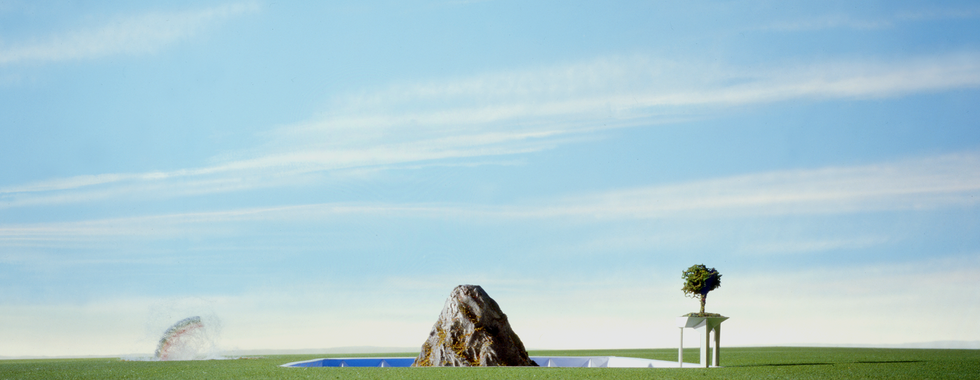Emilio’s Folly: Man is an Island, 1983
- emilio ambasz
- Sep 20, 2023
- 2 min read
Updated: Oct 20, 2023
No, I never thought about it in words. It came to me as a full-fledged, irreducible image, like a vision. I fancied myself the owner of a wide grazing field, somewhere in the fertile plains of Texas or the province of Buenos Aires. In the middle of this field was a partly sunken, open-air construction. I felt as if this place had always existed. Its entrance was marked by a baldachine, held up by three columns, which in turn supported a lemon tree. From the entrance, a triangular earthen plane stepped gently toward the diagonal of a large, sunken square courtyard, which was half earth, half water. From the center of the courtyard rose a rocky mass that resembled a mountain. On the water floated a barge made of logs, sheltered by a thatched roof and supported by wooden trusses that rested on four square-sectioned wooden pillars. With the aid of a long pole the barge could be sculled into an opening in the mountain. Once inside this cave, one could land the barge on cove-like shore illuminated by a zenithal opening. More often, I used the barge to reach an L-shaped cloister where I could read, draw, or just think, sheltered from the wind and sun. The cloister was defined on the outside by a water basin, and on the inside by a number of undulating planes that screened alcove-like spaces. Once I discovered their entrances, I began to use them for storage. Although I am not compulsively driven to order and thrive, instead, on tenuously controlled disorder, I decided to use these alcoves in an orderly sequence, storing things in the first alcove until it was full, and then proceeding clockwise to the next one. The first items I stored were my childhood toys, school notebooks, stamp collection and a few items of clothing to which I had become attached. Later, I started moving out of the house and into the second alcove gifts I had received while doing my military service, as well as my uniform. I became fond of traversing the water basin once in a while to dress up in it, to make sure that I had not put on too much weight. Not all the things I stored in these alcoves were there because they had given me pleasure, but I could not rid myself of them. In time, I developed a technique for using these things to support other objects. I often wondered whether I was going to run out of space, but somehow always found extra room, either by organizing things or because some objects had shrunk or collapsed because of their age or from the weight of the items that had accumulated on top of them. On the diagonal axis passing the entrance canopy, but directly above it, an undulating plane was missing. Instead of a storage alcove, there was an entrance to a man-height tunnel that lead to an open pit filled with a fresh mist. I never understood where this cold-water mist originated, but it never failed to produce a rainbow.







